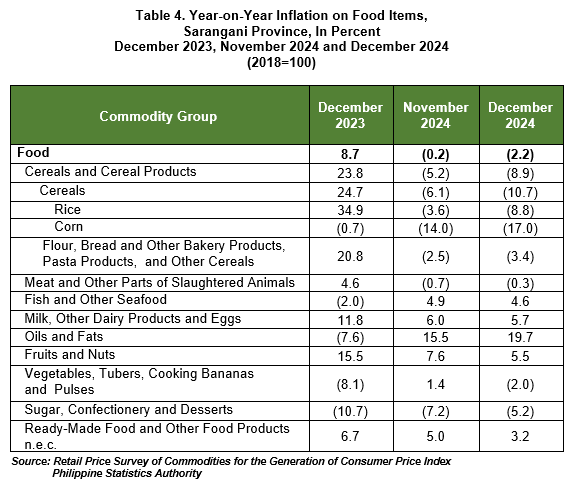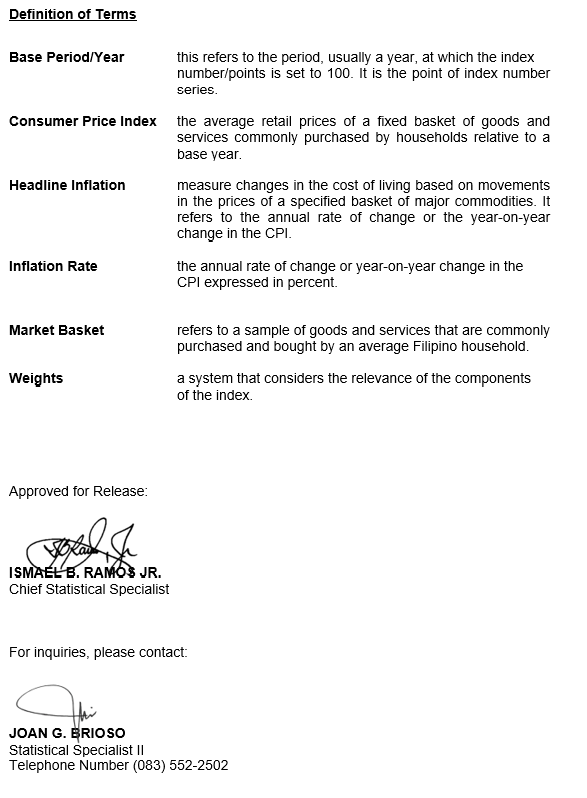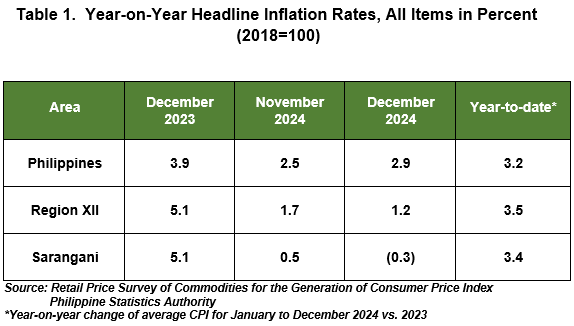
YEAR-ON-YEAR INFLATION RATES
The headline inflation in Sarangani Province declined to -0.3 percent in December 2024 from 0.5 percent in November 2024. This was lower than both the regional and national levels at 1.2 percent and 2.9 percent, respectively. In December 2023, the inflation rate was higher at 5.1 percent. The average inflation of the province for the entire year 2024 was recorded at 3.4 percent. (Table 1 and Figure 1)
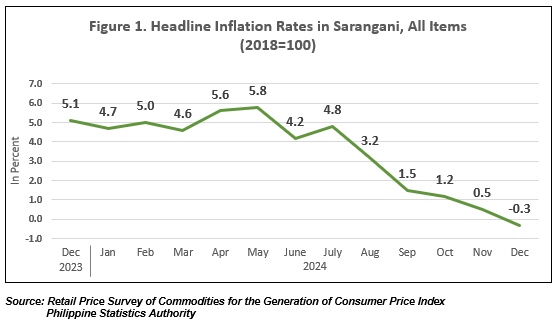
The downtrend in the province’s inflation rate in December 2024 was primarily influenced by the lower annual increment in the index of food and non-alcoholic beverages at -2.0 percent from zero inflation in November 2024. This was followed by furnishings, household equipment and routine household maintenance at 0.8 percent in December 2024 from 1.0 percent in November 2024. The index of health also contributed to the downtrend with an inflation rate of 1.8 percent during the month from 1.9 percent in November 2024.
On the contrary, the following commodity groups registered faster annual increments during the month:
a. Alcoholic beverages and tobacco, 3.5 percent from 2.8 percent;
b. Transport, 1.3 percent from -0.2 percent; and
c. Personal care, and miscellaneous goods and services, 4.4 percent from 4.1 percent. (Table 2)
The rest of the commodity groups: clothing and footwear; housing, water, electricity, gas and other fuels; information and communication; recreation, sport and culture; education services; restaurants and accommodation services; and financial services maintained their previous month’s inflation rates. (Table 2)
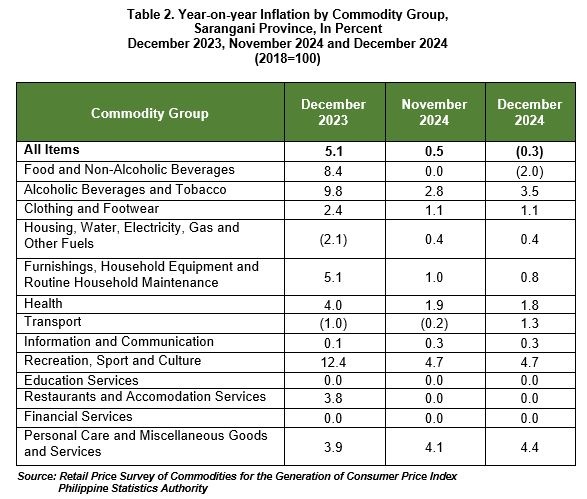
Food and non-alcoholic beverages further decreased to -2.0 percent in December 2024 from zero inflation in November 2024.
The commodity groups that contributed to the decrease in food and non-alcoholic beverages were cereals and cereals products at -8.9 percent from -5.2 percent; vegetables, tubers, plantains, cooking bananas and pulses at -2.0 percent from 1.4 percent; fruits and nuts at 5.5 percent from 7.6 percent; fish and other seafood at 4.6 percent from 4.9 percent; milk, other dairy products and eggs at 5.7 percent from 6.0 percent; ready-made food and other food products n.e.c. at 3.2 percent from 5.0 percent; coffee and coffee substitutes at 3.3 percent from 3.7 percent; tea, maté and other plant products for infusion at 2.1 percent from 3.4 percent; and other non-alcoholic beverages at 0.1 percent from 0.5 percent. (Table 3)
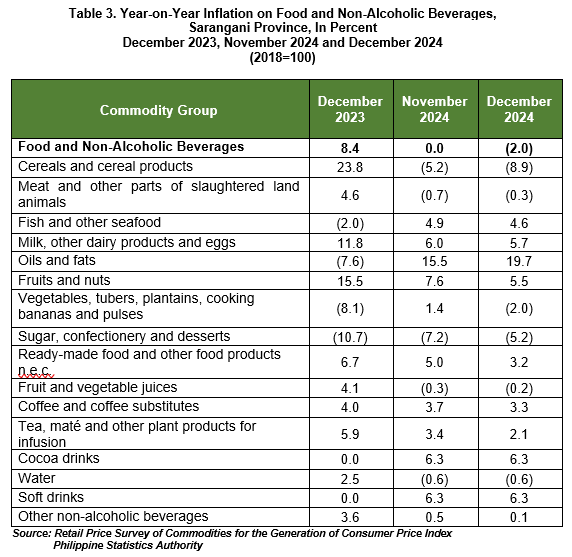
The province’s food inflation decreased to -2.2 percent in December 2024 from -0.2 percent in November 2024. In December 2023, food inflation was noted at 8.7 percent. (Table 4)
The deceleration of food inflation in December 2024 was due to the plunge in prices in cereals and cereal products particularly rice with -8.8 percent from -3.6 percent in November 2024. This was followed by vegetables, tubers, plantains, cooking bananas and pulses with -2.0 percent from 1.4 percent in November 2024. Fruits and nuts also contributed to the downtrend with 5.5 percent during the month from 7.6 percent in November 2024. (Table 4)
Slower annual increments were also noted in the indices of the following food groups during the month:
a. Fish and other seafood, 4.6 percent from 4.9 percent;
b. Milk, other dairy products, and eggs, 5.7 percent from 6.0 percent; and
c. Ready-made food and other food products n.e.c., 3.2 percent from 5.0 percent. (Table 4)
In contrast, faster annual growth rates were recorded in the indices of the following food groups during the month:
a. Meat and other parts of slaughtered land animals, -0.3 percent from -0.7 percent;
b. Oil and fats, 19.7 percent from 15.5 percent; and
c. Sugar, confectionery and desserts, -5.2 percent from -7.2 percent. (Table 4)
